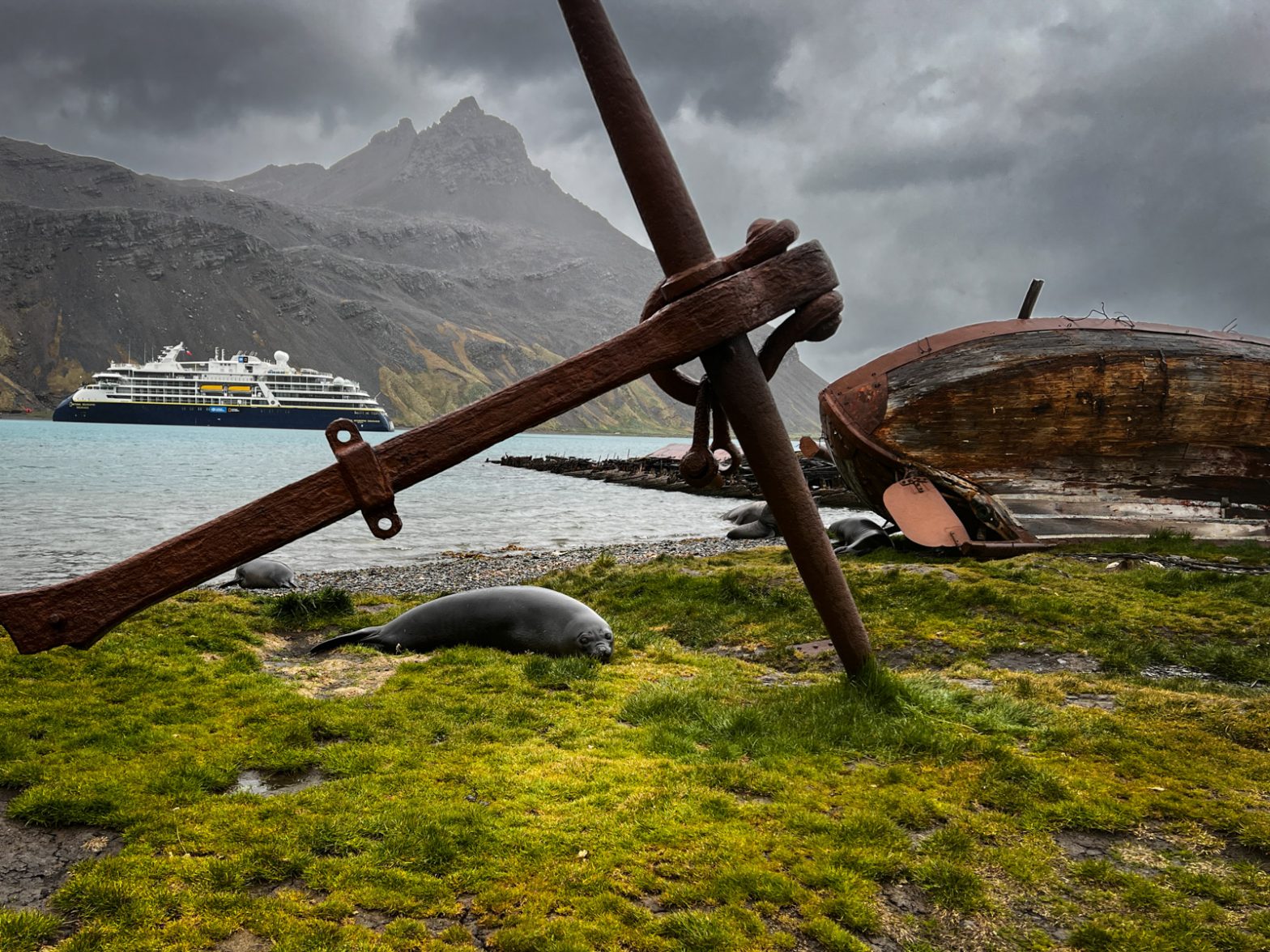
Grytviken, Fortuna & Stromness Bay – The Shackleton Hike – Antarctica Entry 12 by Cindy Goeddel
The Shackleton Hike
After an amazing morning amidst the 500,000 King Penguins crowding the beach at St. Andrews Bay, we steamed toward Grytviken, South Georgia for our afternoon expedition.
Located in Cumberland Bay, Grytviken was established as a permanent whaling station by C.A. Larson in 1904-05. On a good day, 30 or so fin whales each about 60’ long could be processed into about 200 tons of oil. Due to gross over-hunting, whale populations around South Georgia and the South Sandwich Islands crashed; by the 1960’s whaling was no longer viable, and was unpopular and unnecessary. Grytviken closed in 1964, with Leith Harbour the last whaling station closing the following year.
The whaling factory is now a ghost town reclaimed by wildlife. Elephant and Antarctic Fur Seals swim and bask around the ships, boilers, machinery, buildings and fixtures that rust about the bay. A small cemetery is situated on the outskirts of town, the final resting place of Sir Ernest Shackleton and his right-hand man Frank Wild.


The next morning, we awoke in Fortuna Bay where the brave and willing were dropped off to do the Shackleton Hike! Yes, we were able to follow in Shackleton’s footsteps for the last leg of his epic crossing of South Georgia. There would be no turning back, this was a one-way trek to Stromness where the National Geographic Endurance was now sailing to pick us up at the end of our historic crossing.
Stromness, a whaling repair station, was where Shackleton arrived in May 1916 after a desperate 37-hour march across the mountainous spine of South Georgia. Having faced mountain passes, glaciers, crevasses and freezing temperatures, it was a miraculous arrival at Stromness.
In contrast, our 4 mile springtime hike with an elevation gain of 1200’ took 4 hours. We stopped at Crean Lake, named for Tom Crean who along with Worsley completed the crossing with Shackleton. At the top of the pass, clearly in the footsteps of Shackleton, we stopped, closed our eyes and imagined Shackleton and his men listening for the 7:00 am whistle that started the working day at the whaling station. The haunting fear that they were on the wrong pass, or that the station was unmanned, fell away when they were rewarded by the sound of the whistle and knew they were close.


” Never had any one of us heard sweeter music. It was the first sound created by outside human agency that had come to our ears since we left Stromness Bay in December 1914. That whistle told us that men were living near, that ships were ready, and that within a few hours we should be on our way back to Elephant Island to the rescue of the men waiting there under the watch and ward of Wild. It was a moment hard to describe.”
Sir Ernest Shackleton – On hearing the steam whistle, emanating from Stromness Whaling Station.

